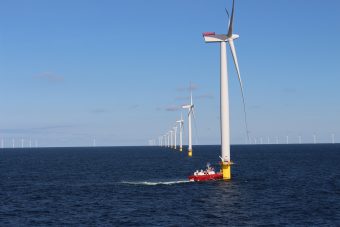
The growing dominance of renewables in the European power industry was underlined yesterday with the release of a new report showing how renewable energy accounted for 86 per cent of all new EU power installations in 2016.
Trade body WindEurope’s annual report revealed how wind commanded the largest share of the clean energy market, accounting for 51 per cent of all new power installations last year as 12.5GW of new capacity was added across 28 EU member states.
The industry also set a new record for investment in wind energy projects, with €27.5bn invested as a 39 per cent increase in offshore wind investment more than offset a 29 per cent decline in investment in onshore wind farms.
Overall European wind capacity reached 153.7GW, with wind energy meeting 10.4 per cent of Europe’s electricity needs last year.
Germany topped the league table for the most new capacity, securing 44 per cent of the EU total, while France, the Netherlands, Finland, Ireland and Lithuania all enjoyed record years.
Giles Dickson, chief executive at WindEurope, said the impressive performance underscored wind energy’s position as “a mainstream and essential part of Europe’s electricity supply”.
“It is also a mature and significant industry in its own right, now providing 330,000 jobs and billions of Euros of European exports,” he added.
However, he warned the outlook for an industry that is increasingly cost-competitive with fossil fuels was being complicated by a lack of policy clarity for the sector beyond 2020.
“With all the talk about the transition to low-carbon, things should be looking good long-term for the wind industry in Europe – but they’re not,” he argued. “Government policy on energy across Europe is less clear and ambitious than it was a few years ago. Only seven out of 28 EU Member States have targets and policies in place for renewables beyond 2020. The transition from feed-in tariffs to auctions has been less smooth than we hoped. We still have dysfunctional electricity markets that are not fit for renewables. And we’re lacking long-term price signals to support investment.”
Source: businessgreen.com

